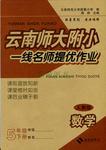题目内容
The French submarine is called Le Triomphant, meaning“the winner”.The name of the British submarine is Vanguard,meaning“the leading position in an army”.It’s clear from the submarines’names that they were made for victory.
However,it was an accident,rather than a victory,that led these two submarines to recently make news headlines across the world.
On February 16,Britain and France admitted that two of their nuclear—armed submarines,HMS Vanguard and Le Triomphant,collided while deep in the Atlantic in early February.Both submarines were on secret patrols(巡逻)and carrying nuclear arms when they collided.
Le Triomphant had no idea that it had run into HMS Vanguard until several days later.The French navy at first believed that Le Triomphant had hit an“object,probably a container(集装箱)”.
Investigations have begun to work out how such a collision could have happened.Both submarines are equipped with state-of~the—art(最先进的)technology that is supposed to find other submarines.Yet,neither submarine saw the other until it was too late.
One idea being considered was that their anti-sonar(抗声纳)equipment,which hides submarines,was just too effective in hiding one from the other.
Submarines use sonar to sense what is in the sea near them.Sonar is a submarine’s ear.Many sea animals use sonar as well.Dolphins produce high-pitched(声调高的)clicks.when these clicks hit an object,some of the sound will echo(发出回声)back to the“sender”.By listening to the echo and working out the time it took before the echo came back,the dolphin can work out how far away the object is.
There are two kinds of sonar:active sonar,which sends out signals,and passive sonar,which listens for signals with extremely sensitive microphones.
The two submarines were designed to be very quiet and as hidden as possible.because a submarine’s job description(工作职责)is not to be found.Many modern submarines do not use active sonar,only passive sonar.This makes it very difficult for a submarine to“hear”if another submarine is near.
Britain’s Ministry of Defense(国防部) has said the collision did not lead to any radioactive leaks(放射物泄漏).The chance of a full nuclear explosion was almost impossible.However,experts say that if the walls of the submarines had broken,or a fire had been started,there could have been a major disaster.
A senior British Navy source told The Sun newspaper that the possible consequences of such a collision were“unthinkable”.
“It’s very unlikely there would have been a nuclear explosion.But a radioactive leak was a possibilitv.That would have been a national disaster.”he said.
1.What has made HMS Vanguard and Le Triomphant well known recently?
A、l heir names carried very positive meanings..
B、They collided in the Atlantic this February.
C、They are both equipped with advanced technology.
D、They are both nuclear—armed submarines.
2.What’s the probable reason for the accident?
A、The two submarines were moving at a high speed.
B、Their anti—sonar equipment was too effective.
C、They were not equipped with active sonar..
D、The submarines were designed to be too quiet.
3.Which of the following is the right order in which the dolphin senses the object’s position?
a、The sound hitting the object.
b、Producing high—pitched sound.
c、The sound echoing back.
d、Working out the time to come back.
e、Receiving the sound.
A、b一a—c—d—e B、d—a—e—c—b C、b—c—d—a—e D、b—a—c—e—d
4.Which of the following is NOT true about the passage?
A、Both of the submarines carried nuclear arms when they collided.
B、Many modern submarines do not use passive sonar so as to be as hidden as possible.
C、The collision may have caused a disaster if a fire had been started.
D、There would have been a nuclear explosion if the two submarines had collided harder.
1.B
2.B
3.D
4.D

 云南师大附小一线名师提优作业系列答案
云南师大附小一线名师提优作业系列答案 冲刺100分单元优化练考卷系列答案
冲刺100分单元优化练考卷系列答案ROME: The legend of Leonardo da Vinci is covered in mystery: How did he die?Are the remains buried in a French castle really those of the master? Was the "Mona Lisa" a self-portrait in disguise (伪装)?
A group of Italian scientists believe the key to solving those puzzles lies with the remains, and they say they are seeking permission to dig up the body to conduct carbon and DNA testing.
If the skull is undamaged, the scientists can go to the heart of a question that has fascinated scholars and the public for centuries: the identity of the "Mona Lisa." Recreating a virtual and then physical reconstruction of Leonardo's face, they can compare it with the smiling face in the painting.
"We don't know what we'll find if the tomb is opened. We could even just find grains and dust," says Giorgio Gruppioni, an anthropologist who is participating in the project. "But if the remains are well kept, they are a biological record of events in a person's life, and sometimes in their death." Silvano Vinceti, the leader of the group, said that he plans to press his case with the French officials in charge of the said burial site at Amboise Castle early next week.
Leonardo moved to France at the invitation of King Francis I, who named him "first painter to the king." He spent the last three years of his life there, and died in 1519 at age 67. The artist's original burial place, the palace church of Saint Florentine, was destroyed during the French Revolution and remains that are believed to be his were eventually reburied in the Saint-Hubert Chapel near the castle.
"The Amboise tomb is a symbolic tomb; it's a big question mark," said Alessandro Vezzosi, the director of a museum dedicated to Leonardo in his hometown of Vinci. Vezzosi said that investigating the tomb could help identify the artist's bones with certainty and solve other questions, such as the cause of his death. He said he asked to open the tomb in 2004 to study the remains, but the Amboise Castle turned him down.
The group of 100 experts involved in the project, called the National Committee for Historical and Artistic Heritage, was created in 2003 with the aim of "solving the great mysteries of the past," said Vinceti, who has written books on art and literature.
Arguably the world's most famous painting, the "Mona Lisa" hangs in the Louvre in Paris, where it drew some 8.5 million visitors last year. Mystery has surrounded the identity of the painting's subject for centuries, with opinions ranging from the wife of a Florentine merchant to Leonardo's own mother.
That Leonardo intended the "Mona Lisa" as a self-portrait in disguise is a possibility that has interested and divided scholars. Theories have existed: Some think that Leonardo's taste for tricks and riddles might have led him to hide his own identity behind that puzzling smile; others have guessed that the painting hid an androgynous lover.
If granted access to the grave site, the Italian experts plan to use a tiny camera and radar to confirm the presence of bones. The scientists would then exhume (挖掘) the remains and attempt to date the bones with carbon testing.
At the heart of the proposed study is the effort to discover whether the remains are actually Leonardo's, including with DNA testing.
Vezzosi questions the DNA comparison, saying he is unaware of any direct descendants (后代) of Leonardo or of tombs that could be attributed with certainty to the artist's close relatives.
Gruppioni said that DNA from the bones could also eventually be compared to DNA found elsewhere. For example, Leonardo is thought to have rubbed colors on the canvas with his thumb, possibly using saliva (唾液), meaning DNA might be found on his paintings.
Even in the absence of DNA testing, other tests could provide useful information, including whether the bones belonged to a man or a woman, and whether the person died young or old.
Even within the committee, experts are divided over the identity of the "Mona Lisa."
Vinceti believes that a tradition of considering the self-portrait to be not just a faithful imitation of one's features but a representation of one's spiritual identity may have resonated (共鸣) with Leonardo.
Vezzosi, the museum director, dismissed as "baseless and senseless" the idea that the "Mona Lisa" could be a self-portrait of Leonardo. He said most researchers believe the woman may have been either a wife of the artist's sponsor, the Florentine nobleman Giuliano de Medici, or Lisa Gherardini, the wife of a rich silk merchant, Francesco del Giocondo. The traditional view is that the name "Mona Lisa" comes from the silk merchant's wife, as well as its Italian name: "La Gioconda."
1. Where is this passage most probably taken from?
|
A.A magazine. |
B.A newspaper. |
C.A textbook. |
D.A research report. |
2. Why does the author ask a couple of questions in the beginning?
|
A.To arouse the interest of readers. |
B.To puzzle Italian scientists. |
|
C.To answer the questions himself. |
D.To make fun of French officials. |
3. The best title of this story might be “_____”.
|
A.What Is the Purpose of an Investigation? |
|
B.How Did Leonardo da Vinci Die in France? |
|
C.Are the Remains Really Those of the Master? |
|
D.Did Leonardo Paint Himself as 'Mona Lisa'? |
4.The sentence “he plans to press his case with the French officials” (underlined in Paragraph 4) suggests that Vinceti intends to _____.
|
A.press the French officials to participate in their project |
|
B.urge the French officials to open the tomb early next week |
|
C.persuade the French officials to allow opening the tomb |
|
D.record events in a person’s life with the French officials |
5. Which of the following statements is true according to the passage?
|
A.Scholars have the same opinion on DNA testing. |
|
B.Scientists doubt if the remains are those of da Vinci. |
|
C.The identity of “Mona Lisa” has already been proved. |
|
D.Alessandro Vezzosi got permission to open the tomb. |
6. We can infer from the last two paragraphs that _____?
|
A.“Mona Lisa” is the name of the wife of a silk merchant |
|
B.the “Mona Lisa” is a self-portrait of Leonardo da Vinci |
|
C.experts divided the committee into several groups |
|
D.opinions differ of the identity of the “Mona Lisa” |